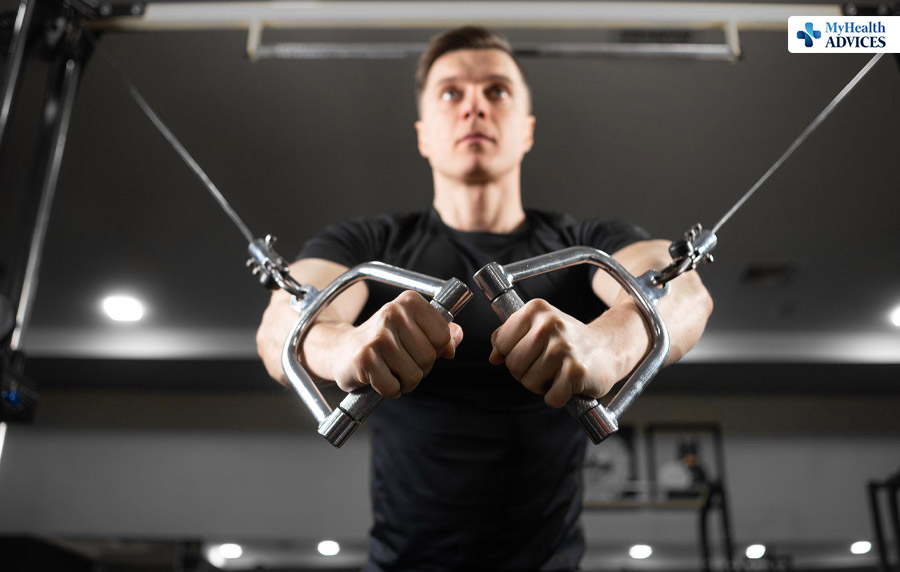We all are fitness freaks and know what are the advantages of doing exercises with the cable pullover. But using the cable machines and the other chest flyers machine use. Most of the muscles work during this exercise. You can increase the power with the same exercise.
The bar’s closeness, in an intimate pas de deux with the lower limbs, bequeaths an avenue for the robust enlistment of the lat ensemble, akin to its straight-armed compatriot. The angle of the corporeal disposition, in the stage of decline, ushers forth an expansive scene for the lats, a range of motion that eclipses its antecedent. Let’s see what the cable pullover exercise is.
What is a cable pullover?
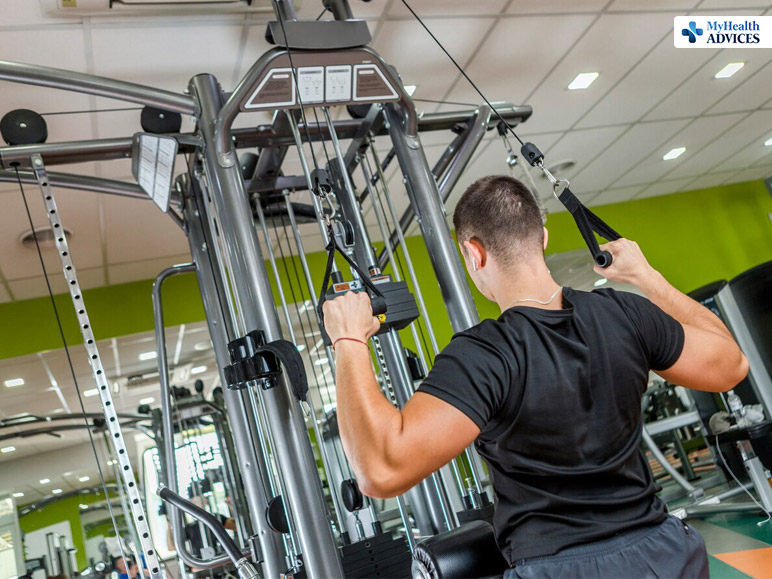
No matter whether you are using the standing cable pullover or anything else, the effects will be the same. It is used for shoulder extension with a cable. You have to do it alone, and it helps you rigidify your shoulder joint and your back muscles, especially your lats.
- Face-to-cable machine pulley
- Stand straight
- Bring your arms towards the thighs.
- Engage your lats as well.
- Pause for a moment, then go back to the previous position.
There is another way to do this exercise, too. We will talk in detail about how it affects our bodies.
How to use a lat pullover cable?
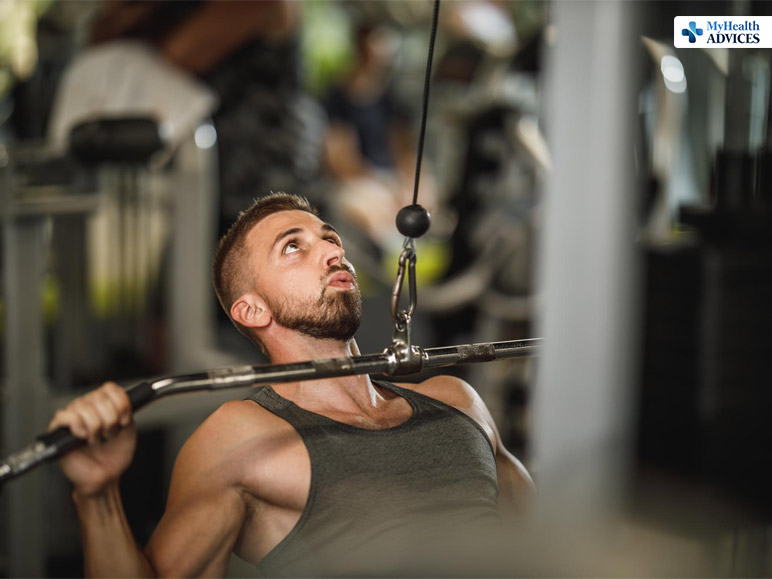
Attach a straight bar or rope handle to the cable machine for using the lat pullover cable.
- First, stand towards the machine.
- Then go two steps away, keeping your feet shoulder-width apart and your back straight.
- Slowly push your chest, but keep your neck in the same position.
- Flex your knee slightly and hinge forward at the hip.
- Perform a push-up with your arms stretched overhead and leaning forward.
- Pull the handle in an arc towards your feet, touch your thighs, and squeeze your lats.
- Control the movement and return to the starting position.
- Repeat.
How to use the Kneeling Straight Arm Cable Pullover?
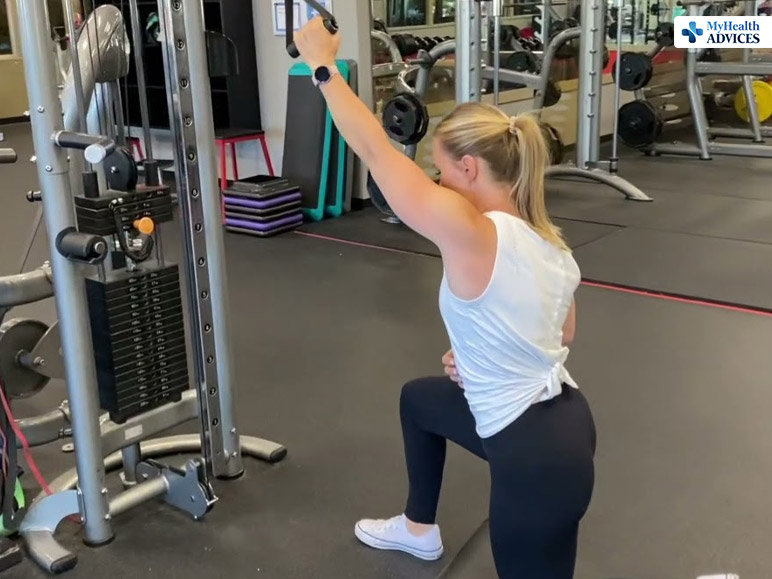
Commence by positioning yourself in front of your low-pull cable machine. Attach a rope handle securely to the bottom pulley and start with a kneeling straight-arm cable pullover.
- Maintain a kneeling position, ensuring both knees are grounded. Keep your head and chest upright, your back in a straight alignment, and engage your core.
- With a firm grip on the handles in each hand, extend your arms straight ahead and draw your shoulder blades together.
- Inhale deeply, then proceed to slowly draw the rope towards yourself in a graceful arcing motion until it reaches above your head. It is imperative to keep your arms fully extended during this phase of the movement.
- Exhale deliberately as you revert to the initial position. Execute this with an unhurried, steady motion, and be attuned to the sensation of your back muscles engaging throughout.
- Repeat this exercise for the desired number of repetitions and sets. Ensure unwavering adherence to impeccable form with each iteration.
- Engage in this routine for a range of 8 to 12 repetitions, three times. This will yield optimal results.
Which muscles worked during cable pullovers?
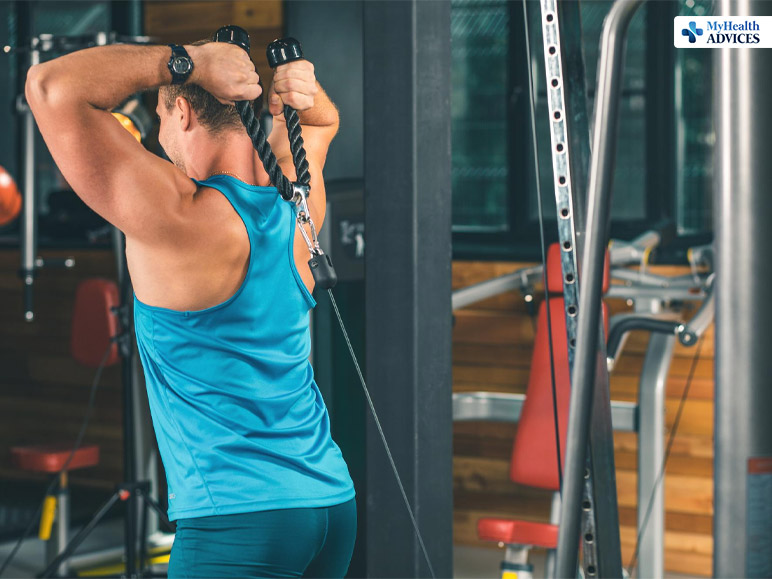
During cable pullovers, few muscles work efficiently let’s have a look at the muscles that work efficiently and effectively.
Latissimus Dorsi (Lats)
The lats are the largest back muscles and are intensely engaged during cable pullovers. They generate the primary pulling force as you bring the cable down and back toward your thighs. Strengthening the lats contributes to a broad and well-defined back.
Pectoralis Major (Pecs)
The pecs, located in the chest region, act as synergistic muscles. Also assisting the lats in the pulling motion. Engaging the pecs during cable pullovers enhances chest size and definition.
Deltoids (Delts)
Cable pullovers primarily target the posterior deltoids, which are responsible for shoulder extension and adduction. Strengthening the deltoids improves shoulder stability and overall upper-body symmetry.
Triceps brachii (triceps)
The triceps, located at the back of the upper arm, actively extend the elbow joint during the pulling motion.
Core Muscles
While not the primary focus, cable pullovers also engage the core muscles. These include the rectus abdominis, obliques, and transverse abdominis. They stabilize the spine and maintain proper posture, providing crucial support and stability during the exercise. This engagement improves overall body control and balance.
Incorporating cable pullovers into your fitness routine effectively engages multiple muscle groups, promoting strength, stability, and overall upper-body development.
Straight-Arm Pulldown vs. Decline Cable Pullover
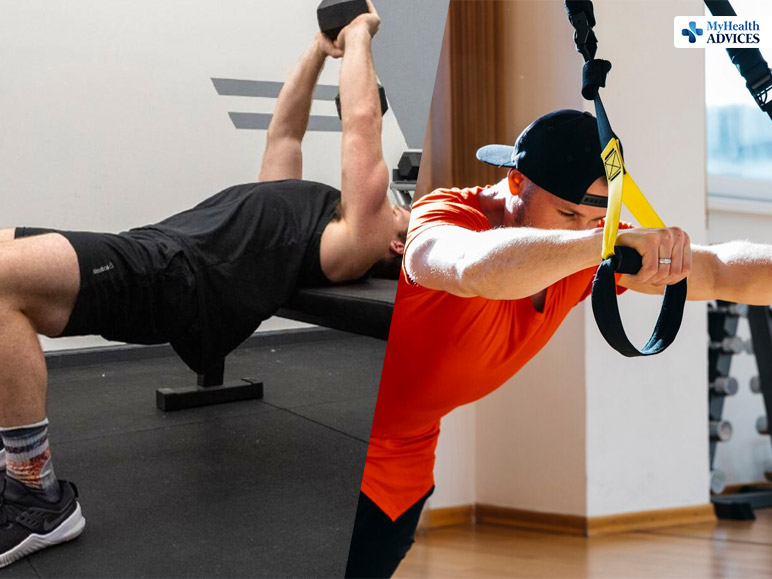
Here are the differences between straight arm pulldown and decline cable pullover.
Straight-Arm Pulldown
In its performance, it affords the solitary activity of the lats while also involving the core muscles, notably the deep abdominals. On the other hand, stabilizers are essential, particularly when lifting heavier objects. To be fully utilized, one must pay attention to the peak of contraction at the lowest point, maintain an unwavering line of sight with the bar, and usher it inward with utmost precision, triggering a deep pull of the lats.
Decline Cable Pullover
This particular exercise necessitates a careful setup of the bench to ensure free extension of the arms without any harmful contact with the plates beneath. In contrast to its straight-arm rival, it lays a modest claim on the services of stabilizing brokers. Its primary focus, one must note, tends towards the chest area, especially in areas of tilt or flatness. Of most importance is the grip, maintained at a shoulder’s width, and the seriousness of maintaining arm accuracy throughout the whole of the motion. As the bar makes its way down to Earth, it movingly meets the lower body, and gravity, it turns out, has no effect at all on how effective this workout is.
Bottomline

In contradistinction to the straight-arm pulldown, there exists no imperious decree to arrest the bar’s progress, enabling an unbroken tapestry of tension, thereby elevating the overarching potency of this exercise.
With due consideration to these pivotal aspects, the decline cable pullover emerges as the leading exercise in the inner lat area. Because of its ability to maintain stress over a wider range of motion and freedom from the constraints of balance, it is the best option for an effective attack on this specific muscle domain.
Additional:
What Is Waist Trainer? What Are Some Best Waist Trainer?
What Is The Best Intermittent Fasting Window To Lose Belly Fat?
Could A Molecule In Cruciferous Veggies Help Protect Against Lung Infection?

